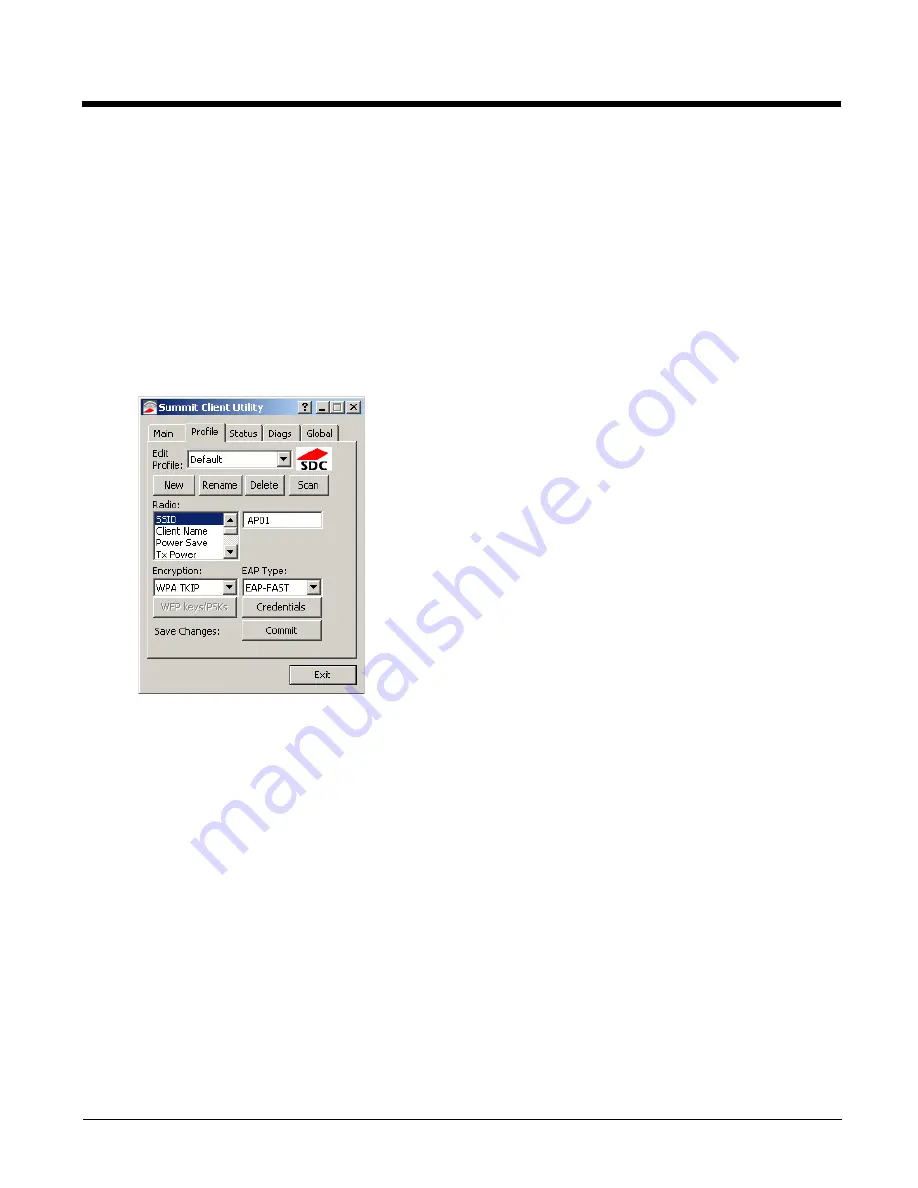
6 - 64
EAP-FAST
To use EAP-FAST, make sure the following profile options are used.
1.
Enter the
SSID
of the Access Point assigned to this profile.
2.
Set
EAP Type
to
EAP-FAST
.
3.
Set
Encryption
to
WPA TKIP
.
4.
Set
Auth Type
to
Open
.
5.
To use another encryption type, select WPA CCKM, WPA2 AES or WPA2 CCKM for encryption and complete
other entries as detailed in this section.
The SCU supports EAP-FAST with automatic or manual PAC provisioning. With automatic PAC provisioning, the user
credentials, whether entered on the saved credentials screen or the sign on screen, are sent to the RADIUS server.
The RADIUS server must have auto provisioning enabled to send the PAC provisioning credentials to the Marathon.
For Automatic PAC provisioning, once a username/password is authenticated, the PAC information is stored on the
Marathon. The same username/password must be used to authenticate each time.
Note: When using Automatic PAC Provisioning, once authenticated, there is a file stored in the \Program
Files\Summit\certs folder with the PAC credentials. If the username is changed, that file must be deleted. The
filename is autoP.00.pac.
For manual PAC provisioning, the PAC filename and Password must be entered.
See
Sign-On vs. Stored Credentials
(page 6-52) for information on entering credentials.
The entries on the Credentials screen are determined by the type of credentials (stored or sign on) and the type of PAC
provisioning (automatic or manual).
Summary of Contents for Marathon
Page 12: ...x ...
Page 16: ...1 4 ...
Page 38: ...3 8 ...
Page 50: ...5 8 ...
Page 128: ...6 78 ...
Page 160: ...9 4 ...
Page 178: ...11 10 Front View ...
Page 186: ...11 18 ...
Page 192: ...12 6 ...
Page 277: ...13 85 6 7 8 9 Cancel ...
Page 282: ...13 90 ...
Page 285: ...Back Cvr 1 ...






























